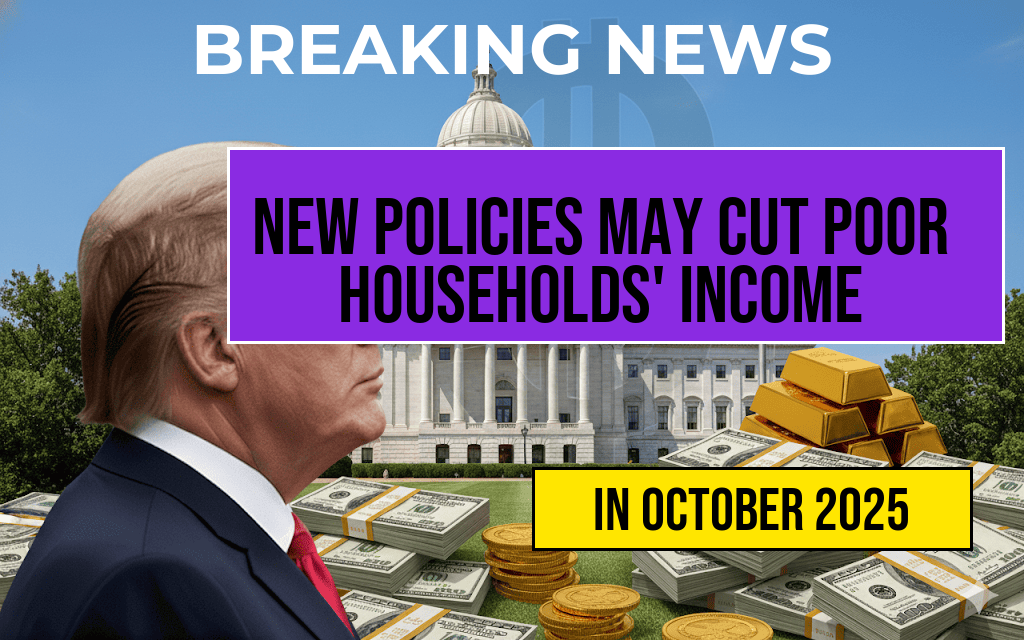Recent policy changes proposed by state lawmakers are causing concern among advocates for low-income families, as they could potentially reduce the annual income of the poorest households by an alarming $1,650. These adjustments, aimed at budget balancing and fiscal sustainability, have sparked a heated debate over their impact on vulnerable populations. Critics argue that the measures disproportionately affect those already struggling to make ends meet, while supporters claim that the changes are necessary to address broader economic challenges. As lawmakers prepare for discussions, the ramifications of these policies could shape the financial landscape for millions of Americans.
Understanding the Proposed Policies
The proposed changes focus primarily on two key areas: welfare assistance and tax credits. By tightening eligibility requirements for various aid programs and modifying tax incentives, the state aims to redirect funds toward other pressing needs. However, the potential fallout from these policies raises questions about their long-term effects on the poorest households.
Welfare Assistance Cuts
- Reduction in Benefits: One major change involves a reduction in monthly assistance payments, which could affect families relying on government support for basic necessities like food and housing.
- Eligibility Revisions: The new eligibility criteria may exclude thousands of families who previously qualified, leaving them without crucial resources.
Changes to Tax Credits
- Altered Earned Income Tax Credit (EITC): The EITC, widely regarded as a vital financial lifeline for working families, faces proposed cuts that could decrease the amount received by low-income earners.
- Phase-Out Adjustments: The threshold for qualifying for credits is being revised, potentially pushing many families out of the program entirely.
Impact on Low-Income Families
According to estimates from economic analysts, the combined effects of these policy changes could lead to an average income reduction of $1,650 for the lowest-income households. This decline is particularly concerning given that many families are already living paycheck to paycheck.
Community Response
Local advocacy groups have voiced strong opposition to the proposed measures. Organizations like the American Civil Liberties Union and the National Center for Children in Poverty argue that these policies could exacerbate poverty levels and increase reliance on emergency services.
Looking Ahead
As discussions unfold in the state legislature, the outcomes of these proposed policies remain uncertain. Lawmakers are expected to hold public hearings, during which community members can express their concerns and suggest alternatives. The potential for compromise exists, but the urgency of the situation means that swift action is necessary to protect the most vulnerable populations.
Expert Opinions
Economists and social policy experts are divided on the implications of these changes. Some believe that fiscal responsibility is vital for the state’s long-term health, while others caution against the immediate human costs of cuts to essential services. Dr. Lisa Williams, an economist at the Brookings Institution, states, “While budgetary constraints are a reality, policymakers must consider the wider societal impacts that these cuts will have on families and communities.”
Conclusion of Current Discussions
As the state navigates these complex issues, the voices of those affected will be crucial in shaping the final outcome. The ongoing debate reflects a broader national conversation about how best to support low-income households while ensuring fiscal sustainability. All eyes will be on the legislature as they weigh these critical decisions in the coming weeks.
Frequently Asked Questions
What recent policies are impacting the income of the poorest households?
The new policies implemented by the government are designed to address various economic challenges, but they are projected to reduce the income of the poorest households by an average of $1,650 annually.
Who will be affected by the income reduction?
The income reduction will primarily impact low-income families and individuals who rely on government assistance programs, making them particularly vulnerable to these policy changes.
What are the potential long-term effects of these policies?
In the long term, the reduction in income may lead to increased financial instability for the poorest households, potentially exacerbating issues related to poverty, access to basic needs, and overall quality of life.
Are there any proposed solutions to mitigate the impact of these policies?
Advocates are calling for policy revisions and increased support programs aimed at shielding the poorest households from the adverse effects of these changes, including potential increases in minimum wage and enhanced social safety nets.
How can affected households seek assistance?
Affected households are encouraged to reach out to community organizations and local government agencies that provide resources and support services to help them navigate the challenges posed by the new policies.

Leave a Reply